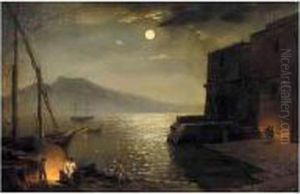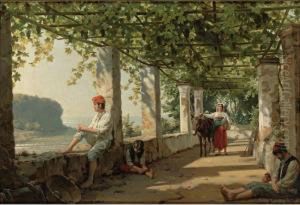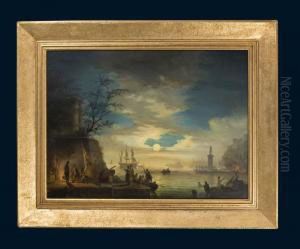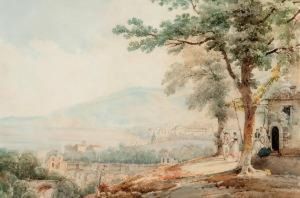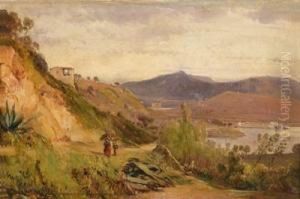Silvestro Feodorov. Schedrin Paintings
Silvestro Feodorovich Schedrin was a notable Russian landscape painter associated with the Romantic movement, born on August 13, 1791, in St. Petersburg. He hailed from a family with a rich artistic background; his father, Fedor Schedrin, was a sculptor and professor at the Academy of Arts, and his uncle, Semion Schedrin, was also a renowned landscape artist. This familial environment fostered his early interest and education in the arts.
Schedrin enrolled at the Imperial Academy of Arts in St. Petersburg at a young age, where he studied under several prominent artists, including his uncle Semion. He showed great promise and was awarded gold medals for his work, which allowed him to continue his studies abroad—a customary practice for talented students at the time. In 1818, Schedrin moved to Rome, which became his base for the next decade and profoundly influenced his artistic development.
During his time in Italy, Schedrin was deeply inspired by the picturesque Italian landscapes and the luminous quality of the Mediterranean light. He moved away from the classical and formal traditions that he learned at the Academy and embraced a more naturalistic and plein-air approach to landscape painting. Schedrin became known for his ability to capture the atmospheric effects and the transient moods of nature, which he conveyed through innovative uses of color and light. His works often feature serene scenes of Italian countryside, coastal views, and rural life that evoke a sense of harmony and peace.
Schedrin's health began to deteriorate in the late 1820s, and he sought relief in the milder climates of Sorrento and Naples. Unfortunately, his condition did not improve, and he passed away on May 5, 1830, in Sorrento at the age of 38. Despite his relatively short life and career, Schedrin left a significant mark on Russian landscape painting. His work bridged the neoclassical and Romantic styles and influenced the next generation of Russian artists. Schedrin's landscapes remain celebrated for their poetic beauty and innovative approach to capturing the ephemeral qualities of the natural world.
